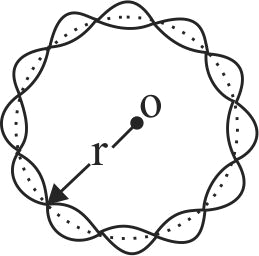357912 The kinetic energy of an electron, \(\alpha\)-particle and a proton are given as \(4 K, 2 K\) and \(K\) respectively. The de-Broglie wavelength associated with electron \(\left(\lambda_{e}\right), \alpha\)-particle \(\left(\lambda_{\alpha}\right)\) and the proton \(\left(\lambda_{p}\right)\) are as follows :
357912 The kinetic energy of an electron, \(\alpha\)-particle and a proton are given as \(4 K, 2 K\) and \(K\) respectively. The de-Broglie wavelength associated with electron \(\left(\lambda_{e}\right), \alpha\)-particle \(\left(\lambda_{\alpha}\right)\) and the proton \(\left(\lambda_{p}\right)\) are as follows :
357912 The kinetic energy of an electron, \(\alpha\)-particle and a proton are given as \(4 K, 2 K\) and \(K\) respectively. The de-Broglie wavelength associated with electron \(\left(\lambda_{e}\right), \alpha\)-particle \(\left(\lambda_{\alpha}\right)\) and the proton \(\left(\lambda_{p}\right)\) are as follows :
357912 The kinetic energy of an electron, \(\alpha\)-particle and a proton are given as \(4 K, 2 K\) and \(K\) respectively. The de-Broglie wavelength associated with electron \(\left(\lambda_{e}\right), \alpha\)-particle \(\left(\lambda_{\alpha}\right)\) and the proton \(\left(\lambda_{p}\right)\) are as follows :
357912 The kinetic energy of an electron, \(\alpha\)-particle and a proton are given as \(4 K, 2 K\) and \(K\) respectively. The de-Broglie wavelength associated with electron \(\left(\lambda_{e}\right), \alpha\)-particle \(\left(\lambda_{\alpha}\right)\) and the proton \(\left(\lambda_{p}\right)\) are as follows :
